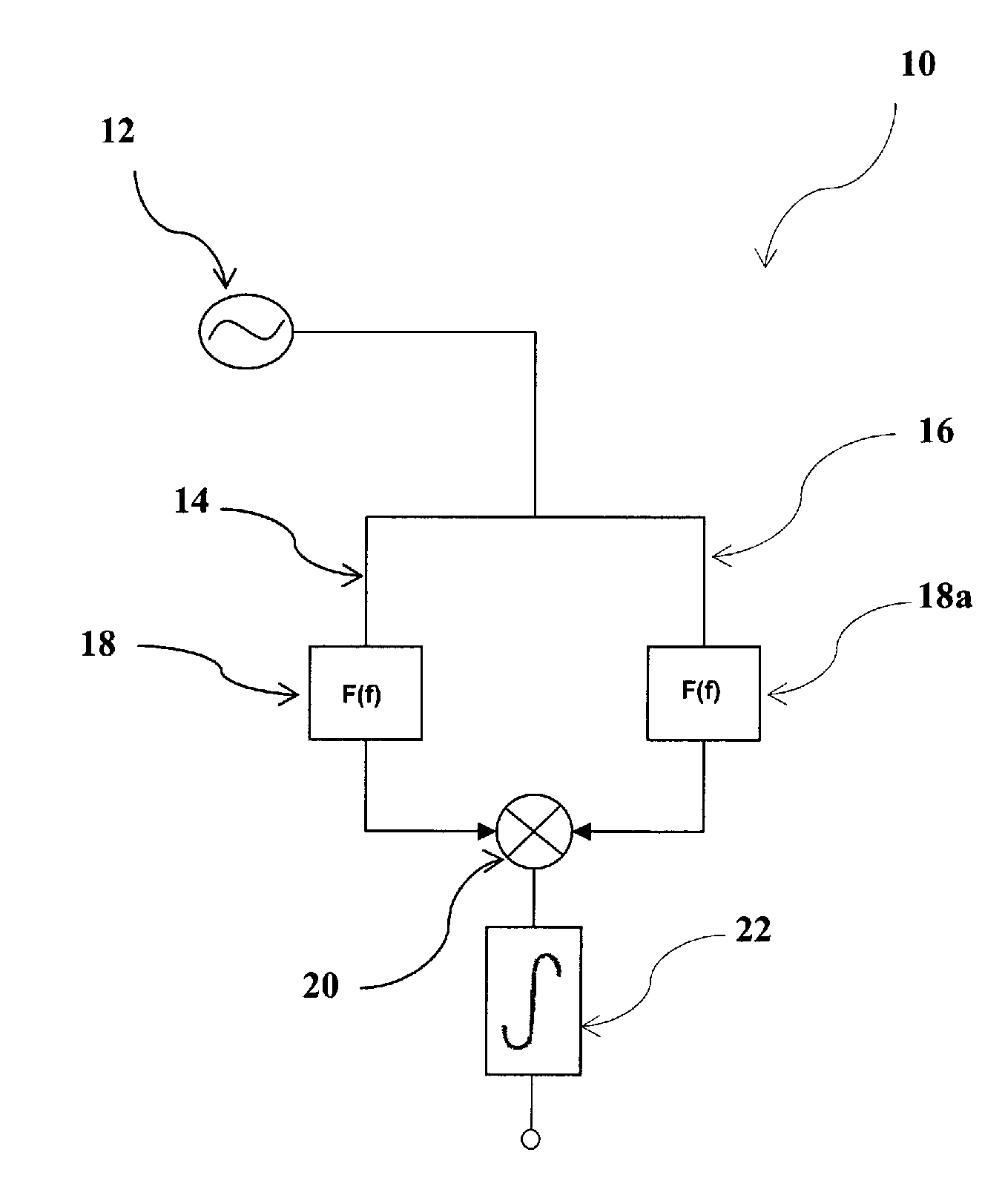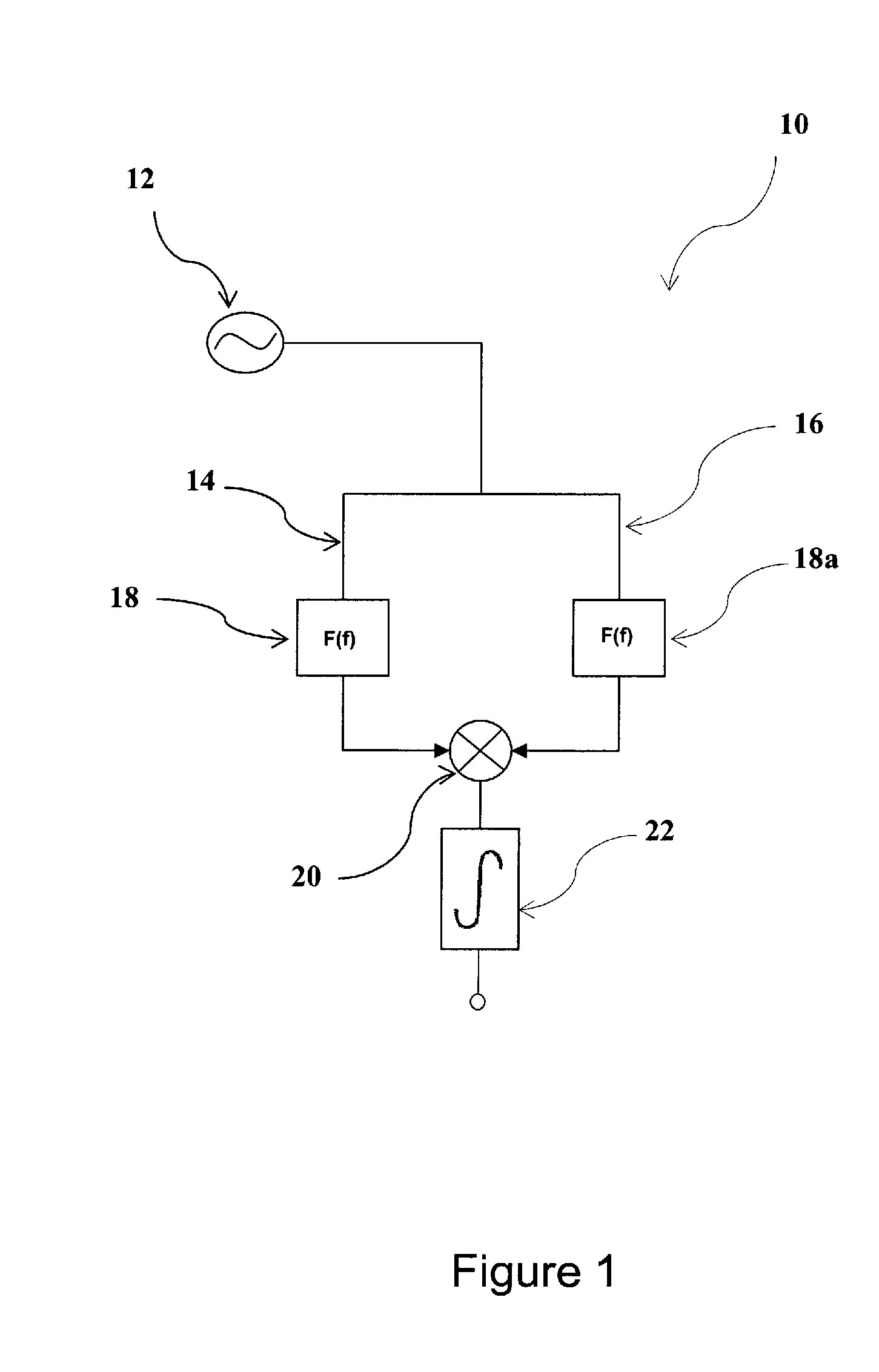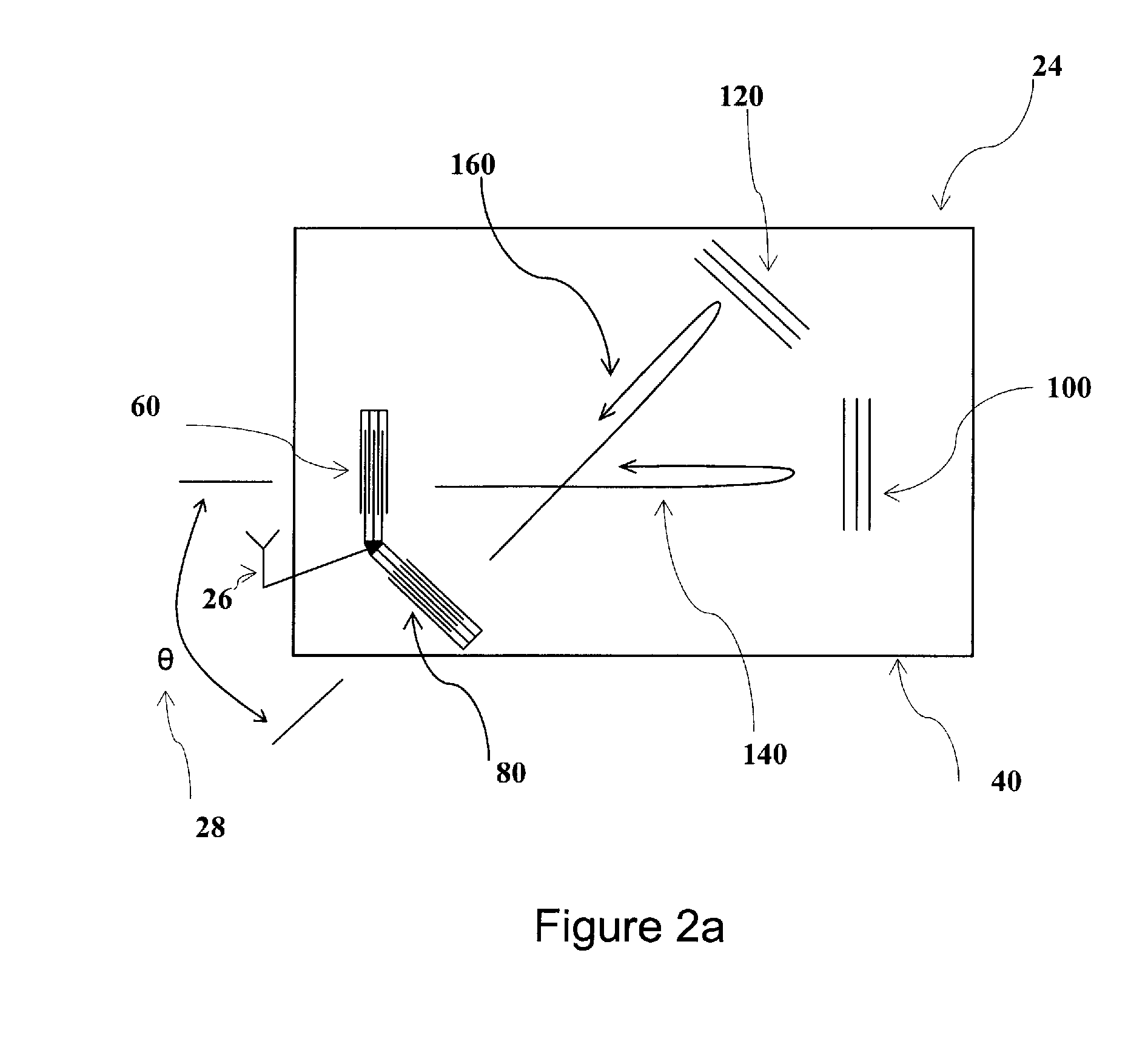Coded acoustic wave sensors and system using time diversity
a technology of acoustic wave sensor and time diversity, applied in the field of surface acoustic wave sensor and interrogator apparatus, can solve the problems of significant problems in the approach, and ineffective use of orthogonal codes alone as a basis for passive sensor discrimination
- Summary
- Abstract
- Description
- Claims
- Application Information
AI Technical Summary
Benefits of technology
Problems solved by technology
Method used
Image
Examples
Embodiment Construction
[0024]The invention provides an interrogation system for passive SAW sensors with time diversity.
[0025]The time integrating correlator has been in use in signal processing applications for many years. In its simplest form, as shown in FIG. 1, the correlator 10 includes a signal source 12 which is split into two paths, a reference path 14 and a signal path 16. A transfer function 18 for each of the two paths can be defined as F(f), where F(f) is an arbitrary function but is common to both paths except for a possible multiplicative scalar factor “a” in one of the paths. The signal following the transfer function F(f) 18 in the reference path 14 is multiplied, such as in a multiplier 20, by the signal following the transfer function F(f) 18a in the signal path 16 and the product is applied to an integrator 22. Since the product is the square of the transfer function F(f) (a positive quantity), the integral at the output of the integrator 22 is a monotonically increasing function. Even ...
PUM
 Login to View More
Login to View More Abstract
Description
Claims
Application Information
 Login to View More
Login to View More - R&D
- Intellectual Property
- Life Sciences
- Materials
- Tech Scout
- Unparalleled Data Quality
- Higher Quality Content
- 60% Fewer Hallucinations
Browse by: Latest US Patents, China's latest patents, Technical Efficacy Thesaurus, Application Domain, Technology Topic, Popular Technical Reports.
© 2025 PatSnap. All rights reserved.Legal|Privacy policy|Modern Slavery Act Transparency Statement|Sitemap|About US| Contact US: help@patsnap.com



